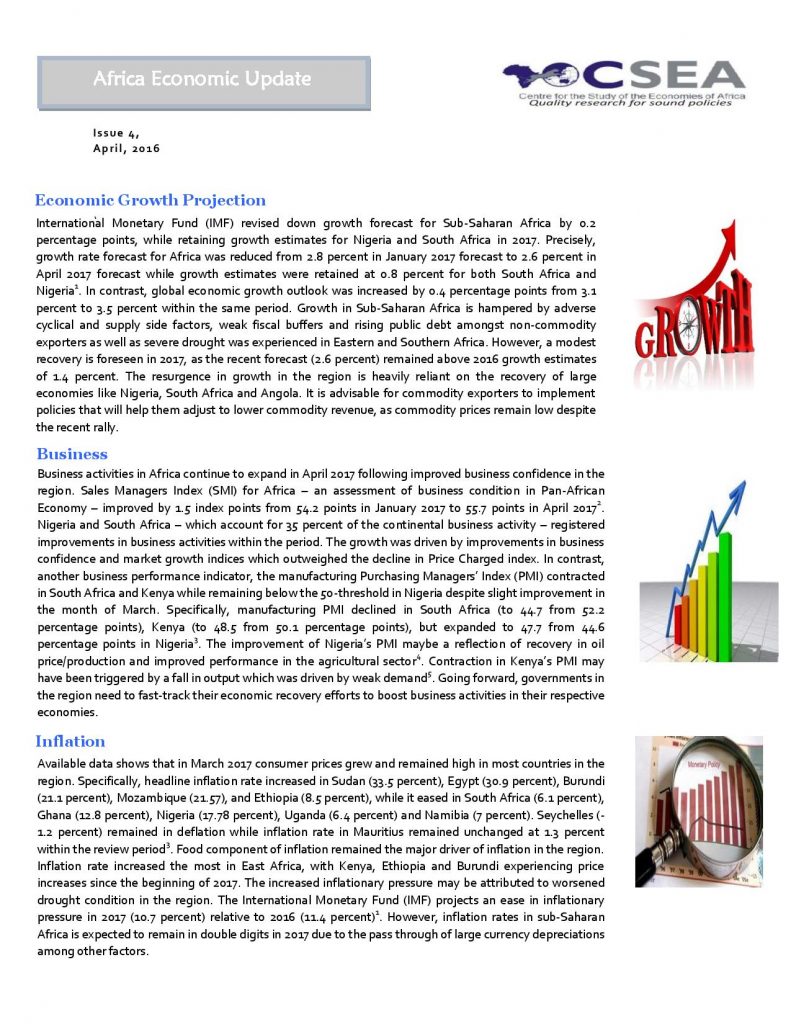Macroeconomic Report & Economic Updates

May 30, 2017
Africa Economic Update (Issue 4)
International Monetary Fund (IMF) revised down growth forecast for Sub-Saharan Africa by 0.2 percentage points, while retaining growth estimates for Nigeria and South Africa in 2017. Precisely, growth rate forecast for Africa was reduced from 2.8 percent in January 2017 forecast to 2.6 percent in April 2017 forecast while growth estimates were retained at 0.8 percent for both South Africa and Nigeria. In contrast, global economic growth outlook was increased by 0.4 percentage points from 3.1 percent to 3.5 percent within the same period. Growth in Sub-Saharan Africa is hampered by adverse cyclical and supply side factors, weak fiscal buffers and rising public debt amongst non-commodity exporters as well as severe drought was experienced in Eastern and Southern Africa
